M. FORD CREECH ANTIQUES & FINE ARTS
SET of 11 QUEEN ANNE BRITANNIA SILVER DOGNOSE (WAVY-END) TABLESPOONS
Lawrence Jones (6), London 1706
Lewis Mettayer (3), London , 1708
Joseph Barbut (1), London, 1703
Philip
Roker II (1), London, 1721
all crested en suite
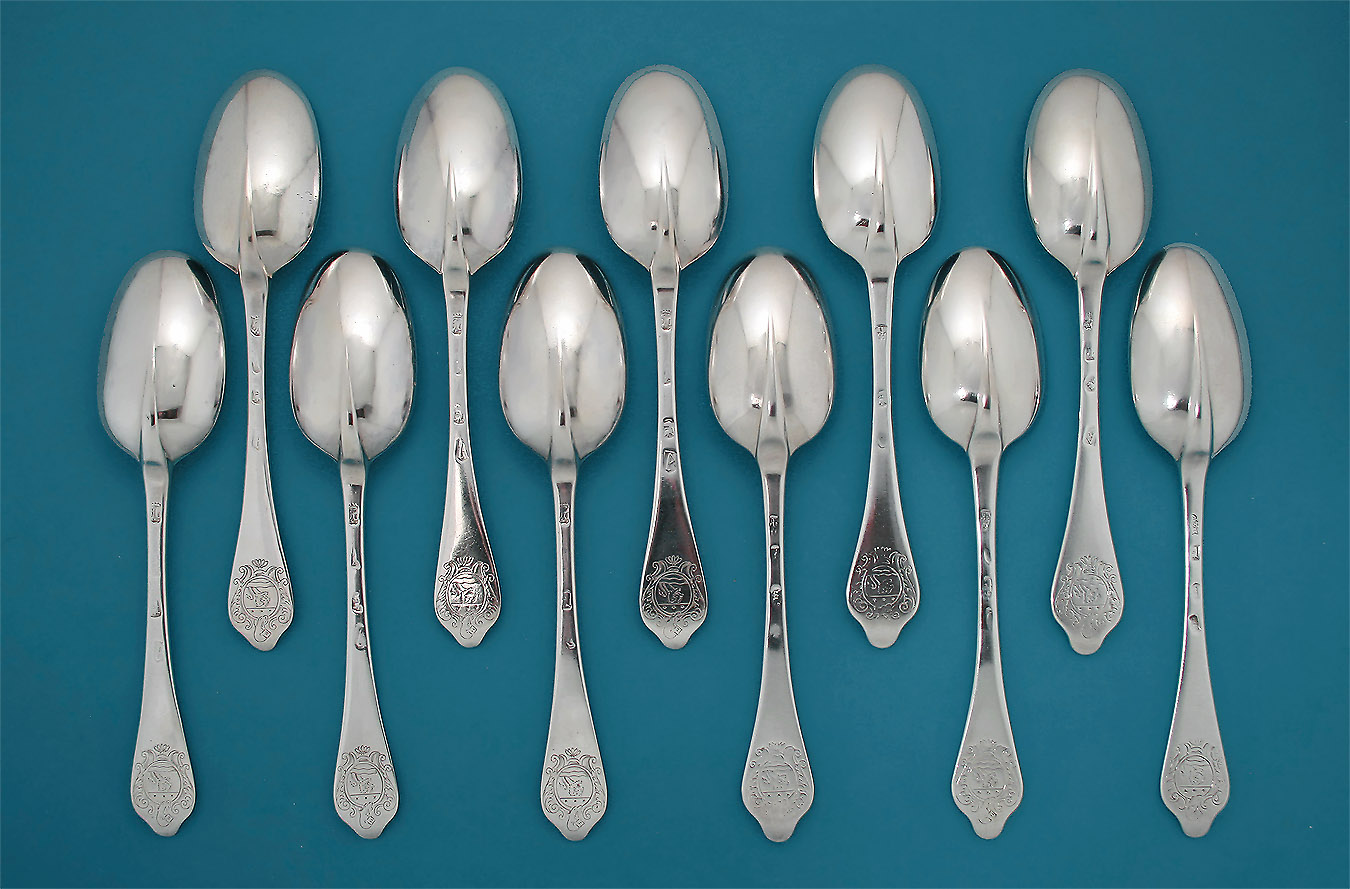
| |
Rare set of 11 (6 +
3 + 1 + 1) Britannia silver dognose spoons with upturned wavy end terminals,
the bowls with
molded
rattail attachments, each crested alike with contemporary arms depicting a
demi-lion rampant, in paw a
scimitar, below three
mullets, within an oval and mantle surmounted by a helmet
Marks: Good to excellent
Some date and Britannia marks rubbed but legible
Lawrence Jones (6) - Grimwade #3665, JO with crown above and star below
Lewis Mettayer (3) - Grimwade # 2018, ME in a shaped punch with 2 devices above
Joseph Barbut (1) - Grimwade # 119, BA beneath a crown surmounted by a sun
(Huguenot maker)
Philip Roker II (1) - #2398, RO beneath a crown and above a flower
(apprenticed to Barbut) (George I)
Condition: Excellent
Note:
Mettayer was an important Huguenot maker, the brother-in-law of, and
apprenticed to David Willaume I.
Provenance
for the 1 Mettayer, Barbut and Roker : How of Edinburgh.
Each 8” Long;
24.9 oz. total weight
#5421
SOLD |
|
Right to Left:
Lawrence Jones (6), London 1706
Lewis Mettayer (3), London , 1708
Joseph Barbut (1), London, 1703
Philip
Roker II (1), London, 1721
all crested en suite
Provenance for left three
- Mettayer (1), Barbut, Roker : How of Edinburgh
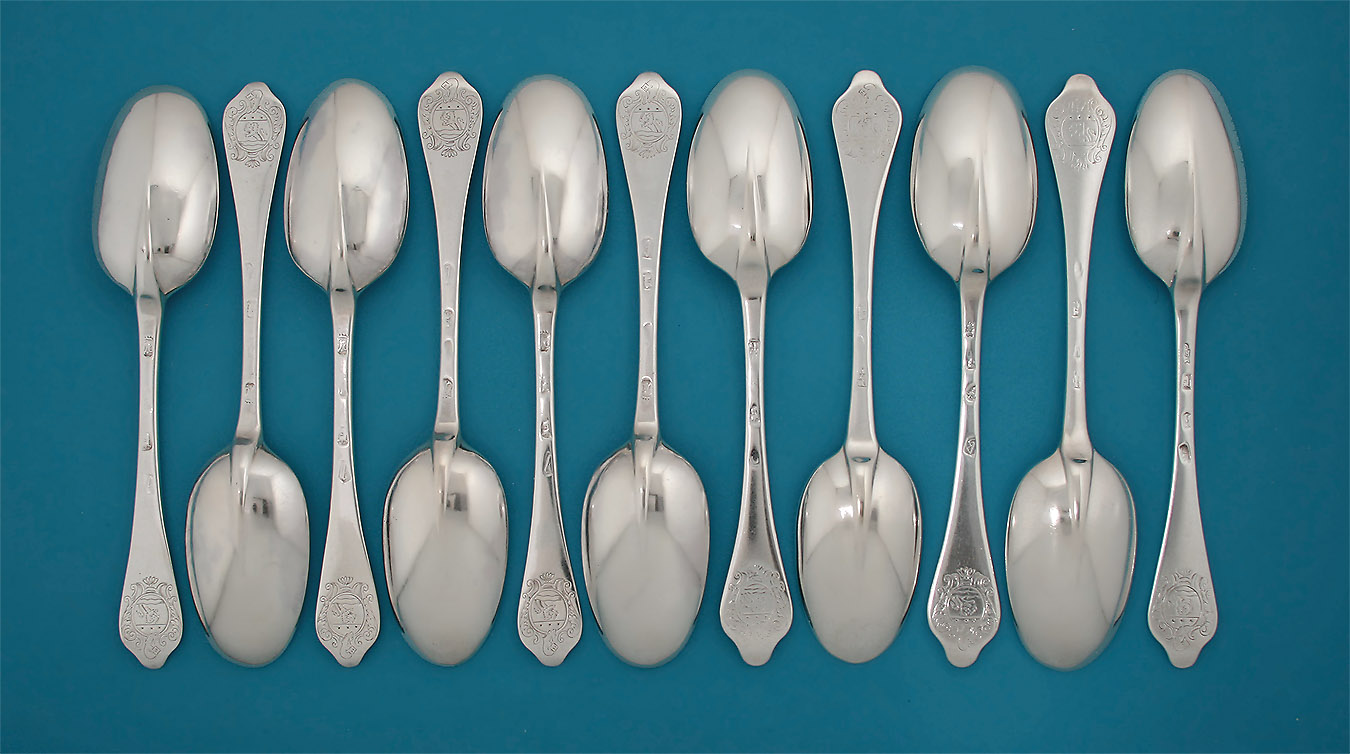
(Left to
right - Jones:
#1-6; Mettayer: #7-9; Barbut #10: Roker #11)
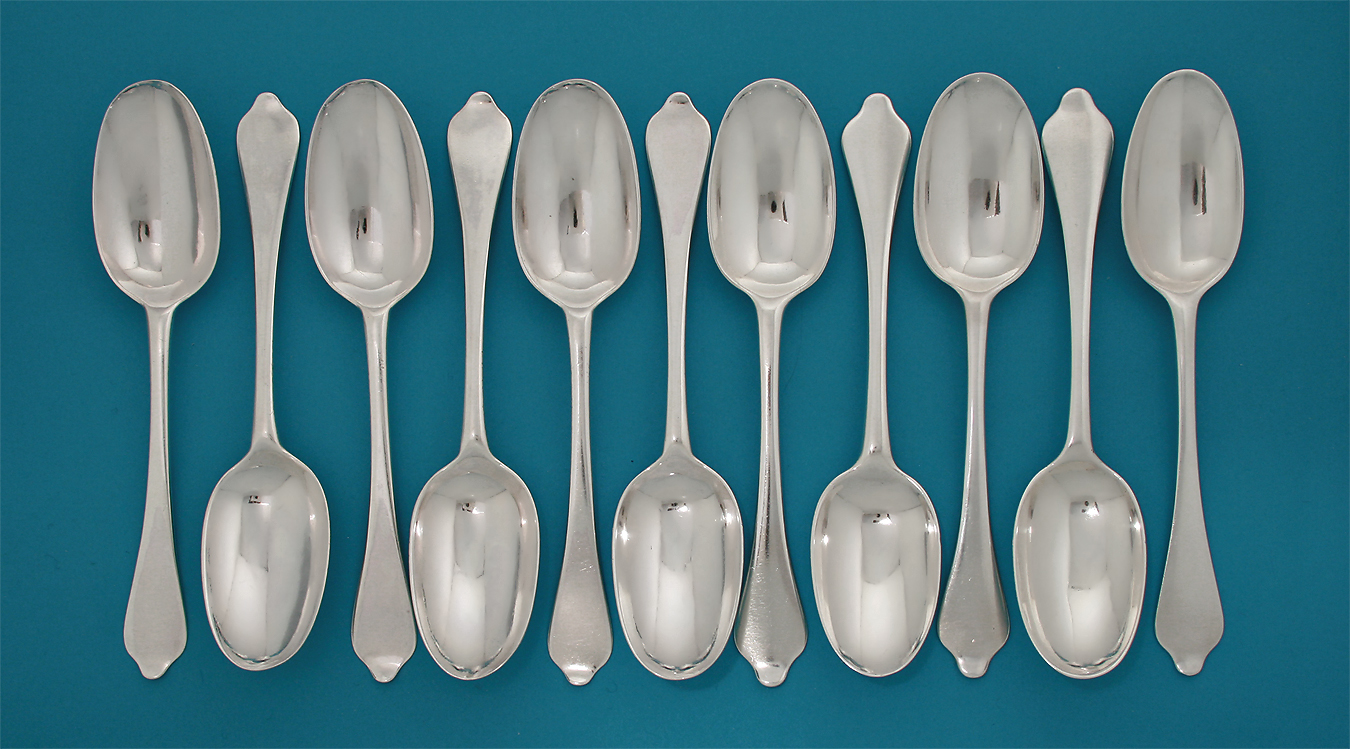
Below: Lawrence Jones (6)
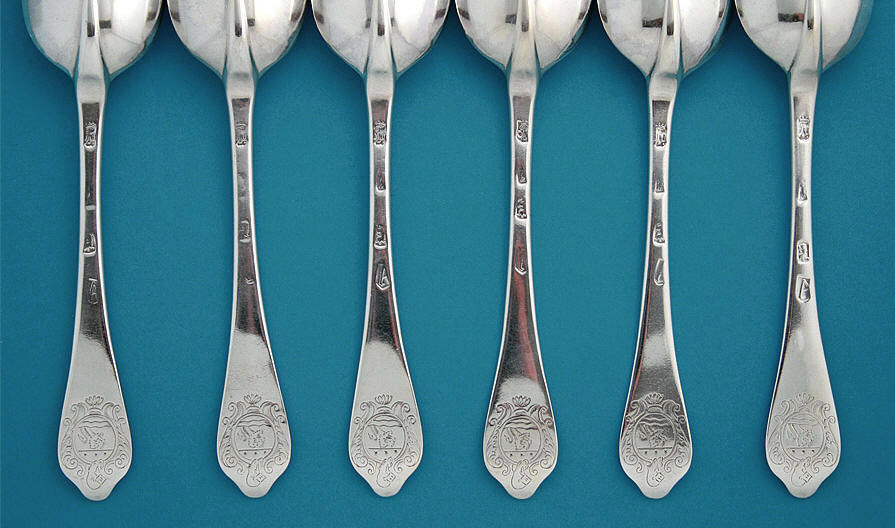

(Jones
marks)
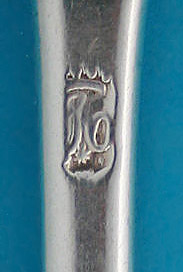 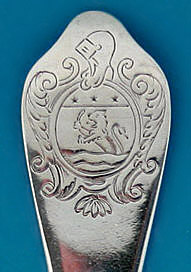
(Jones
Marks and Terminal Crest)

Left to right: Mettayer 1,2,3; Barbut 4; Roker 5

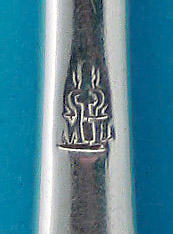 
(Mettayer Marks and Terminal Crest)

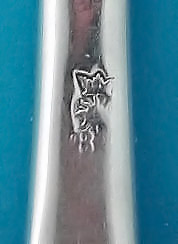 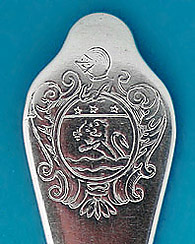
(Barbut Marks and Terminal Crest)

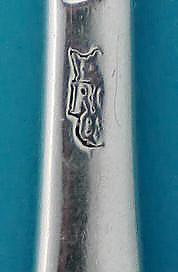 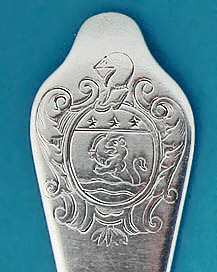
(Roker Marks and Terminal Crest)
| |
BRITISH SILVER SPOON SETS
Sets of spoons are quite rare in the early 18th century.
The use of spoon-like utensils goes back to pre-history. Earliest
spoons were probably shells -
the word spoon deriving from the Anglo-Saxon word spon, meaning sliver of
wood.
The earliest found silver British spoon dates to the
Anglo-Saxon period (499-1060) and resides in the Ashmolean Museum,
Oxford. From the 1500's,
single silver spoons were often given at birth to the wealthy as a lifetime utensil.
These were
carried about on the person when traveling - through a slit in the hat or perhaps in a "cutlery pouch" suspended from the waist - a
practice common even into the early 18th century. (See illustration below, c1620). If one forgot his/her utensils, the
"house spoon" of wood of pewter might be supplied by the inn or host.
In the 16th and early 17th century, a royal or extremely wealthy newborn
might be recipient of a
small "set" of apostle spoons at christening; however, even those were given by multiple sponsors,
the sponsorship being limited to 3 in the second half of the 16th century.
A complete set of apostle spoons would comprise 13
spoons - 12 apostles and one master spoon.
Few complete such complete sets still exist, and usually reside in museums.
Small silver dessert sets were introduced in the mid-1690's, usually in sets
of 6, both in the trefid
and dognose (wavy-end) patterns. In the Queen Anne period (1703-14), although most spoons were
still ordered
in singles or pairs, some small sets were ordered - usually still in sets of 6.
These were added to as needed.
It is
interesting to note that dinner silver forks with three tines were not introduced until the Queen Anne period.
The earlier clergy contended that
God gave people fingers for eating.
The "sherbet course" was introduced at this time, not to clear the palette, as commonly thought,
but for the washing of the single fork. (Knives were ordered from "haft makers",
and not included with sets of silver until the
late 18th century).
Although sets of 12 utensils (forks or spoons) were ordered from c1720
forward,
the complete set of silver flatware, as we know
it today, did not come about until c1760. Even early Georgian
Hanoverian sets are quite rare.
The presented Britannia set is exceptional, both in existence and in
condition, all with arms en suite,
and without tip wear. The dating is Queen Anne, with one addition in 1721 (George I) by Philip
Roker II,
who was apprenticed to Barbut, maker of the earliest of these spoons in 1703.
 |
|
Also see :
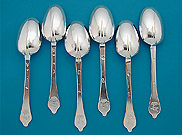
SET OF 6 QUEEN ANNE/ GEORGE I BRITANNIA
SILVER DOGNOSE (WAVY-END) TABLESPOONS
Thomas
Allen (4), London, 1710; John Millington (2), London, 1721, , crested
for Mainwaring
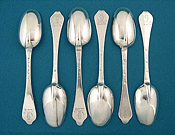
SET OF 6
GEORGE I BRITANNIA SILVER
DOGNOSE (WAVY-END) TABLESPOONS
Andrew Archer, London, 1718

Rare Set of 4 Queen Anne Britannia
Silver Dognose 3-Tine Forks
Benjamin Watts (3), 1703; Thomas Sadler (1), 1703
SOLD
Early British Table Silver Catalog
please click here
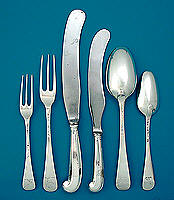
We welcome and encourage
all inquiries regarding our stock. We will make every attempt to answer any questions you might
have.
For
information, call (901) 761-1163 or (901) 827-4668, or
Email : mfcreech@bellsouth.net or mfordcreech@gmail.com
American Express, Mastercard, Visa and Discover accepted

 
M. Ford Creech Antiques & Fine Arts / 581
South Perkins Road / Memphis,
TN 38117 / USA /
Wed.-Sat. 11-6, or by appointment
|





















